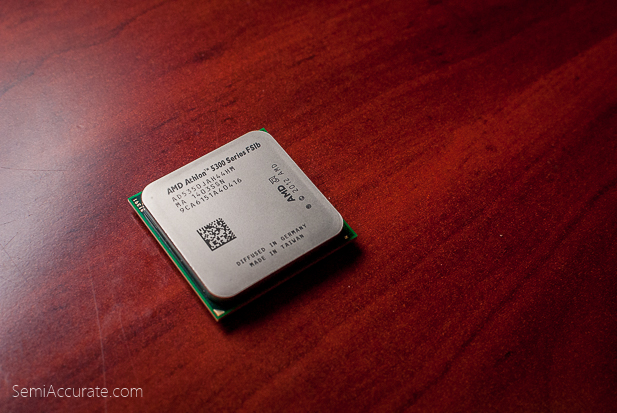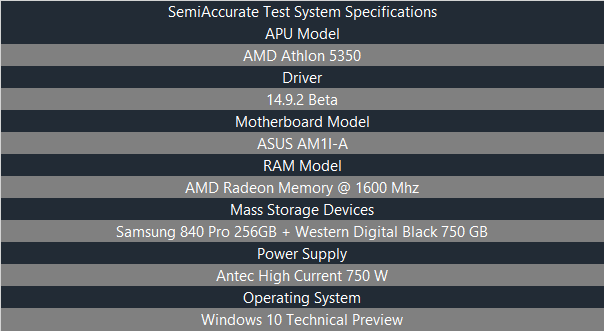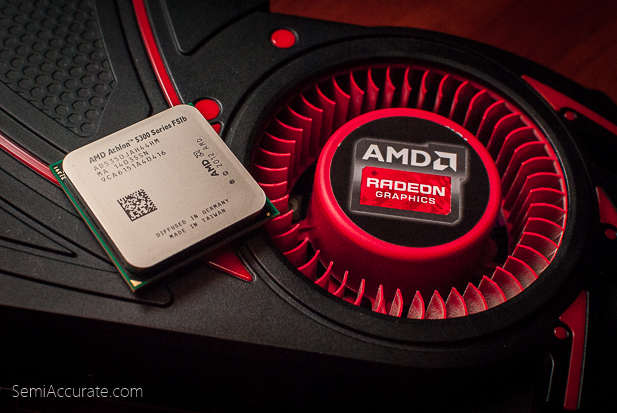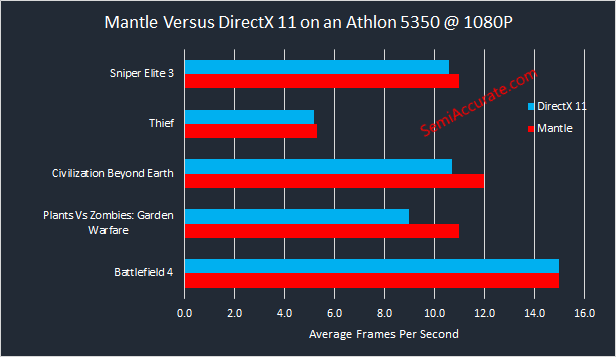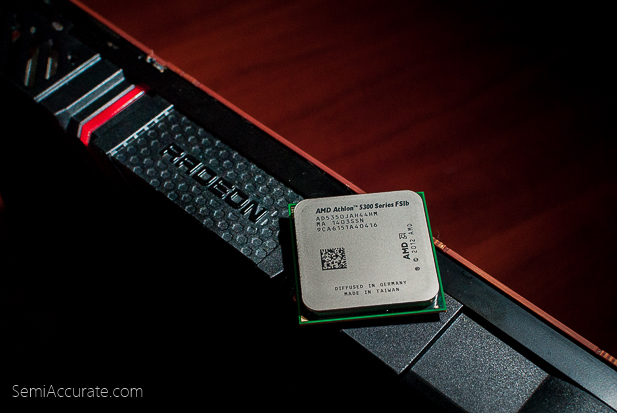In Part 4 of this series we’ll be looking at the benefits of AMD’s Mantle API over Microsoft’s DirectX 11. This is a five part series; in part 4 we’ll be looking at the performance of AMD’s low-end APU the Athlon 5350. For information on the Mantle API and DirectX 11 please read part 1, part 2, and part 3 of this series.
Our test system is built around AMD’s Athlon 5350 which is a $59 chip that has four cores and uses AMD’s socket AM1. We chose the 5350 because it’s the fastest version of Kabini, AMD’s little APU, on the market. With 4 GBs of DDR3 at 1.6 Ghz and a single channel memory controller this is what we’d consider a budget system.
For the sake of transparency we want you to know that AMD provided the Athlon 5350 and ASUS motherboard we’ll be testing today along with codes for all the games we’ll be looking at. AMD also provided the our test system’s RAM. All of the other components we’re using were purchased at retail without the knowledge or consent of those companies. As always you can find our raw testing data on OneDrive. We took no outside input for this article other than the suggestions and support coming from our lovely forums, thanks guys.
Our Benchmarks
We’ll be using the same games that we detailed in part 1. Namely Civilization: Beyond Earth, Plants Vs Zombies: Garden Warfare, Thief, Sniper Elite 3, and Battlefield 4. Just like our testing on the A10-7850K all the games here were run at their lowest possible settings. Smoothness in any of these games was not possible we had no specific frame rate target in mind for these games. Rather we just wanted them to render something, anything. For the sake of consistency and because this testing is largely academic rather than practical all the games tested here were run at a resolution of 1080P.
Only in three of the games we tested does Mantle actually improve performance. Even then the largest gain we see is two frames per second. With or without Mantle the Athlon 5350 just doesn’t have any gaming chops.
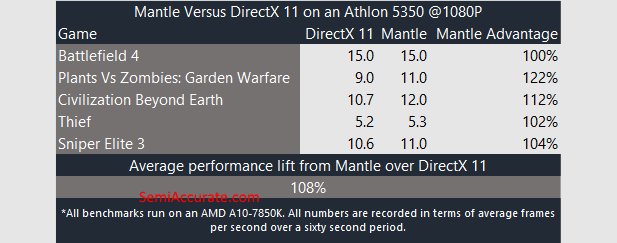
Looking at our table the results are a bit rosier. An 8 percent average increase isn’t that far out of line from our other testing. But it’s worth noting that literally none of these games are playable on this chip so the performance advantage is largely meaningless.
Mantle can’t help weak PCs
These results clear show one important concept: Mantle can’t help weak PCs. Five years ago 128 GCN cores would have been a formidable GPU. But in an age where the best GPUs have few thousand cores barely more than a hundred isn’t a enough to make modern games playable in full HD. Mantle or no, Kabini’s GPU just isn’t up to the task. There is an argument I read somewhere a few months ago that Mantle would show big benefits on low power and low-cost devices like tablets and embedded systems. While our results aren’t a direct counter to that argument they do cast additional doubt upon it. On the other hand tablet games are far less performance intensive than AAA titles; but we have yet to see anyone other than AAA game developers adopt Mantle, so perhaps a vision of Mantle boosting the performance of tablets was always a pipe dream.
Those musings aside I do believe that we’ve shown that the CPUs on these low-power chips are not the bottleneck for gaming applications. Rather its the paltry GPUs that these chips are built with that limits their gaming performance. Mantle’s headlining feature is its ability to reduce CPU bottlenecks in games, but that ability is wasted on platforms with strong CPUs and comparatively weak GPUs.S|A
Thomas Ryan
Latest posts by Thomas Ryan (see all)
- Intel’s Core i7-8700K: A Review - Oct 5, 2017
- Raijintek’s Thetis Window: A Case Review - Sep 28, 2017
- Intel’s Core i9-7980XE: A Review - Sep 25, 2017
- AMD’s Ryzen Pro and Ryzen Threadripper 1900X Come to Market - Aug 31, 2017
- Intel’s Core i9-7900X: A Review - Aug 24, 2017
